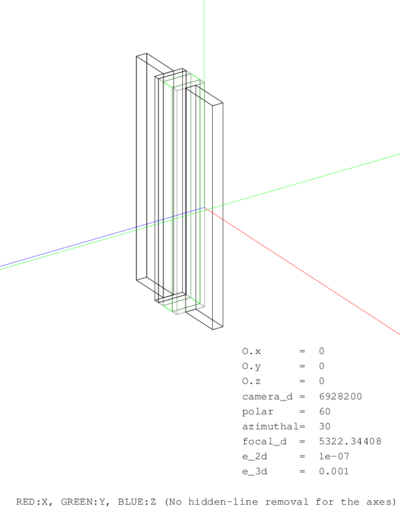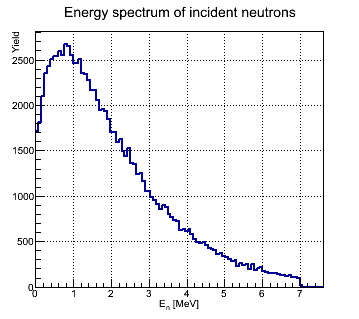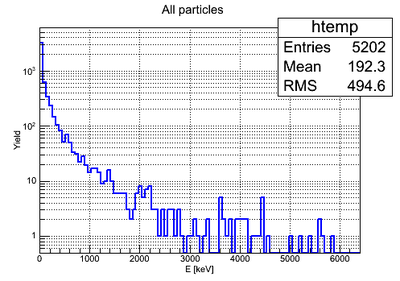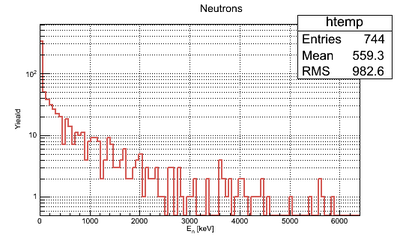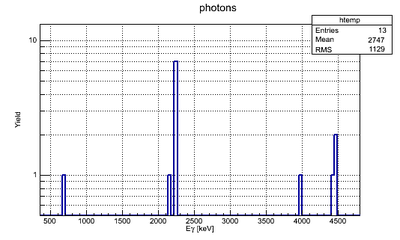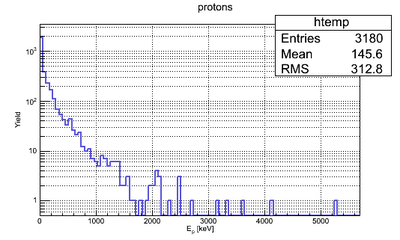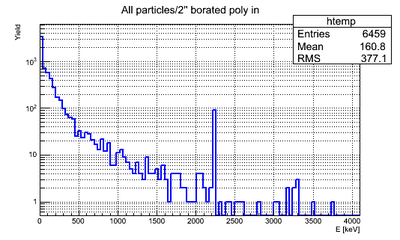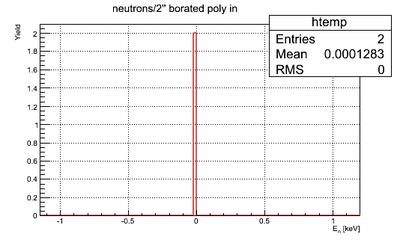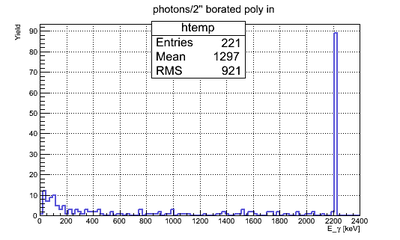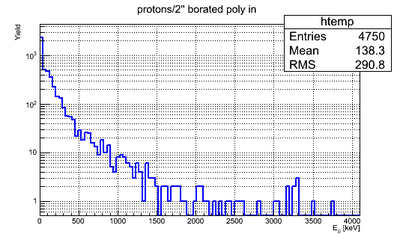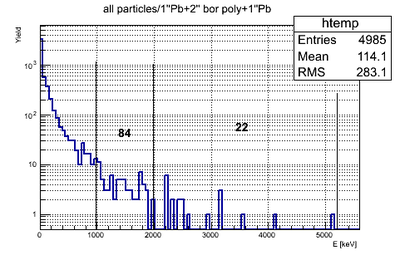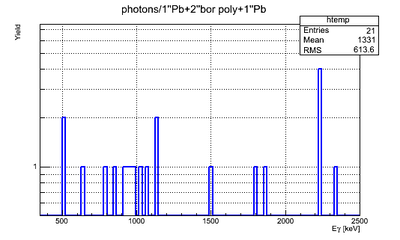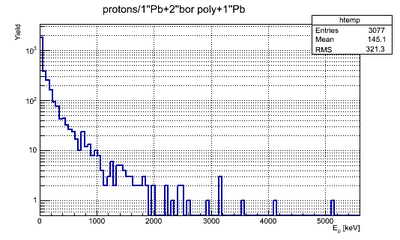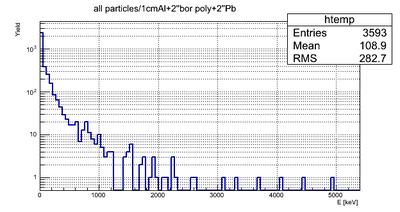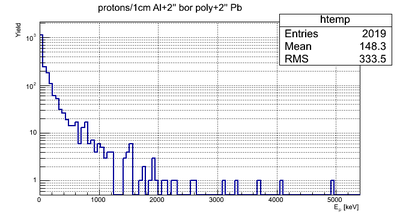Difference between revisions of "X-talk between n-dets"
| Line 78: | Line 78: | ||
[[File:all_particles_2inBorPoly2inPb2cmAl.png | 400px]] | [[File:all_particles_2inBorPoly2inPb2cmAl.png | 400px]] | ||
| + | |||
| + | NO neutrons observed. | ||
| + | |||
| + | NO photons observed. | ||
| + | |||
| + | and the following number of protons: | ||
| + | |||
| + | [[File:protons_2inBorPoly2inPb1cmAl.png | 400px]] | ||
Revision as of 16:12, 19 August 2014
The simulation of the cross talk between two neutron detectors was performed using GEANT4 program. The simulated detector layout is shown below:
The following stages of simulation of the x-talk were considered:
1) the x-talk effect is due to the acceptance of the analysing detector, i.e. there was no shielding in between the two detectors;
2) only 2" of borated poly was placed in between;
3) borated poly was placed in between two layers of 1" lead layers;
4) 2 cm Al layer was added to the shielding described in stages 1)-3) from the side of the analysing detector.
The number of incident particle (neutrons) was and their energy spectrum is shown below:
Neutrons were incident uniformly over the surface of one of the neutron detectors normally to the surface w/o hitting the shielding and the analysing detector such that we have pure x-talk effect due to neutron interaction with the material BC-420 of the neutron detector being irradiated. The analysing detector detected all the particles scattered/produced in the shielding/BC-420.
Stage 1 of the simulation
The energy spectrum of all possible particles entering the analysing detector is presented below:
Out of the cumulative particle energy spectrum we have the following number of neutrons:
the following number of photons:
and the following number of protons:
Stage 2 of the simulation
The energy spectrum of all possible particles entering the analysing detector after placing 2" of borated poly in between the detectors is presented below:
Out of the cumulative particle energy spectrum we have the following number of neutrons:
the following number of photons (photon peak ~2.2MeV can be seen as a result of neutron capture reaction):
and the following number of protons:
Stage 3 of the simulation
The energy spectrum of all possible particles entering the analysing detector after adding 2 layers of 1" lead placed at the sides of the 2" borated poly is presented below:
Out of the cumulative particle energy spectrum we have the following number of neutrons:
NO neutrons observed.
the following number of photons:
and the following number of protons:
Stage 4 of the simulation
The energy spectrum of all possible particles entering the analysing detector after adding 2 cm of Aluminium to 2 layers of 1" lead placed at the sides of the 2" borated poly is presented below:
NO neutrons observed.
NO photons observed.
and the following number of protons:
